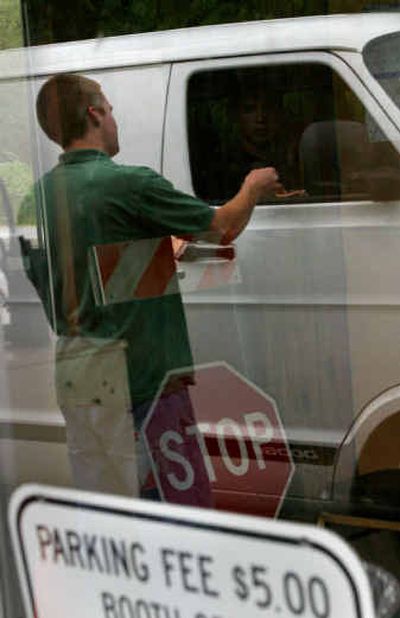State park use falls on debut of parking fee

Attendance at Washington state parks fell about 21 percent last year, the first year of a new parking fee aimed at boosting revenue for the cash-strapped system.
All told, about 38.7 million people visited state parks in 2003, down from nearly 48.9 million the year before, according to data from the Washington State Parks and Recreation Department.
Attendance figures through June 2004, the most recent numbers available, show the trend is continuing.
Some parks saw attendance drop while a few have seen slight increases since the fee — $5 a day or a $50 annual pass — was introduced Jan. 1, 2003.
Battleground Lake State Park near Vancouver and Maryhill State Park on the Columbia River each saw visitor numbers drop by almost half in 2003. But at Deception Pass State Park on Whidbey Island, the state’s most popular park, attendance increased by about 5 percent.
At Lake Sammamish State Park in Issaquah, the second most-visited park in the system, attendance dropped nearly 13 percent.
The availability of other parking nearby seemed to affect the numbers, said Virginia Painter, a spokeswoman for the state parks commission. Other factors, such as weather and travel trends, make it difficult to compare year-to-year numbers, she said.
Parks officials said they had been bracing for even steeper declines.
“When we first started the fees, we did a lot of research. We were told by other state park systems that had begun fees to expect a 30 percent to 40 percent — in some cases even higher — drop in attendance,” Painter said.
The state projected the fee would generate around $10 million in its first two years, but collections last year fell $600,000 short of the target.
About 37 percent of the two-year, $105 million parks operations budget is expected to be generated from fee revenue, up from 25 percent a decade ago.
That includes all fees collected by state parks, including those for camping and use of boat launch areas. The money is needed for the park system’s $40 million maintenance backlog, Painter said.
Roughly 40 percent of the parking fee is expected to cover the administrative costs of collecting it, including staff and collection boxes.
Painter said attendance is expected to rise back to earlier levels by the fourth year of the fee, when people get accustomed to the idea of paying to use the parks.
By that time, the daily fee will be $7 — a change that’s scheduled to take effect in 2006.